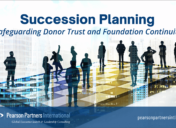Tips from the Leadership Coach: Control Change or Be Controlled
Control Change or Be Controlled
Lisa Thompson, Managing Director, Professional Services
As our clients close out 2013 and are looking to the new year, many are considering various forms of change in their organizations. But change can be daunting. Most individuals and organizations tend to be comfortable with the status quo. Before trying something new, they analyze the emotional, financial and reputational risks of making a change. Most of the time, organizations have an inherent bias in favor of the “tried-and-true,” simply because it appears to be less risky.
But organizations—like individuals—should recognize that following the tried-and-true path can also carry significant risks. For instance, a company may fail to adapt to shifts in the market. Think of the retail book and record stores that went out of business when consumers shifted to online providers. Another hidden risk is the loss of human capital when young workers and experienced managers decide to work for a more dynamic company with better growth prospects.
Therefore, many successful organizations have taken a proactive approach to change, rather than simply responding to events. To paraphrase the so-called law of the jungle, it’s not so much “kill or be killed,” but “change or be changed.”
Rose Fass, author of The Chocolate Conversation: Lead Bittersweet Change, Transform Your Business, suggests that CEOs look at change as a multi-part process. First, organizations need to determine what type of change is necessary. This process may require in-depth discussions among the senior leadership team, and sometimes bringing in an experienced consultant who can look at the “symptoms” and try to drill down to the reasons for making a change. Next, CEOs need to sell the change to employees and stakeholders. And finally, they need to implement the change and periodically revisit and adjust the plan as necessary to make sure the objectives are being met.
Based on our firm’s experience, taking a proactive approach to change is far more likely to lead to positive outcomes than trying to react to external or internal pressures. One suggestion that can help the senior leadership team is to create a dedicated task force or committee whose sole responsibility is to look at potential changes in the organization. The change committee should be given a wide mandate that could include updating the company’s mission, launching a new product or service, adjusting the distribution and sales network or flattening the organization chart, just to name a few possibilities. The committee can report to the senior leadership team on a regular basis, opening up a new channel for discussion about “big-picture” issues.
For organizations that prefer to take control of the future, rather than operate in a reactive mode, establishing a change committee on the senior leadership team can be a big step forward. It’s certainly a change well worth considering.














